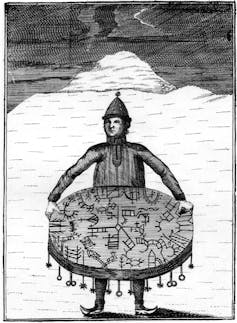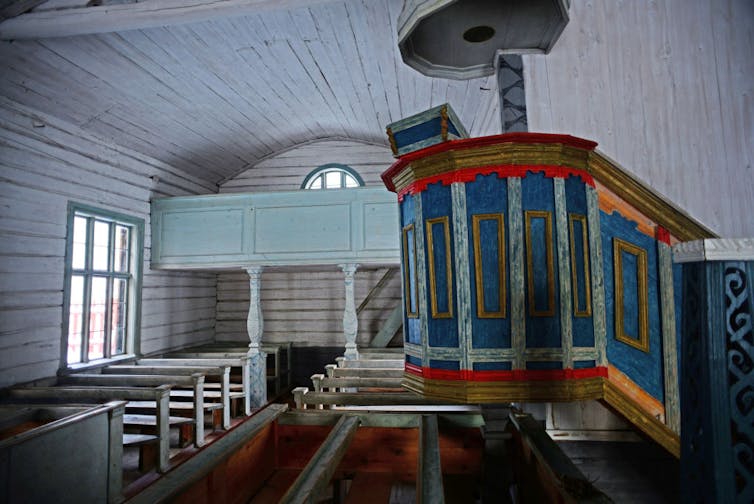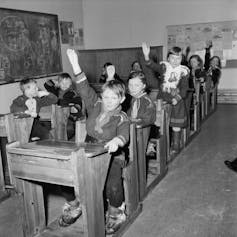(The Conversation) — In May 2025, Tapio Luoma, archbishop of the Evangelical Lutheran Church of Finland, delivered an apology to the Sámi, the only recognized Indigenous people in the European Union.
Speaking on behalf of the church to which more than 6 in 10 of the Finnish populace belong, including most Sámi, Luoma acknowledged its role in past activities that stigmatized Sámi language and culture.
The church “has not respected the rights to self-determination of the Sámi people,” his address began. “Before God and all of you here assembled, we express our regret and ask forgiveness of the Sámi people.”
Luoma’s words were the latest in a series of apologies through which the former state churches in Scandinavia have sought to reset their relations with the Indigenous population of Sápmi, the natural and cultural area of Sámi people. Today, the region is divided between Finland, Norway, Sweden and Russia.
As a scholar of Sámi culture, and as a researcher of Nordic folklore and religion, I have studied the difficult, often painful, relations between Sámi and the various Nordic state churches.
Church’s power
For thousands of years, the Sámi population lived by hunting, fishing and reindeer husbandry along the northern edges of Scandinavia. The Sámi possessed their own languages and maintained distinctive spiritual traditions and healing practices, drawing on traditional ecological knowledge that they had accrued over countless generations. In times of crisis or uncertainty, for example, communities used ceremonial drums to communicate with the spirit world and divine the future.
Conflicts emerged by the 13th century, however, as Christian realms expanded north. Christian clerics condemned Sámi spiritual traditions as “heathen devilry.”

An 18th-century carving of a Sámi shaman with his drum.
Beskrivelse over Finnmarkens Lapper, deres Tungemaal, Levemaade og forrige Afgudsdyrkelse/O. H. von Lode/Wikimedia Commons
During the 16th-century Protestant Reformation, Scandinavian rulers shifted from Catholicism to Lutheranism. In addition to tending to the souls of their flocks, ministers were tasked with keeping track of the comings and goings of congregation members, collecting taxes, and administering justice for lesser crimes.
They aimed to stamp out the spiritual practices that many Sámi continued to practice alongside Christianity. Church authorities arrested, fined and sometimes even executed practitioners, while confiscating sacred drums to be destroyed or sent to distant museums.
The church’s ritual of confirmation, which marks the passage from adolescence into adulthood, also acquired legal status. Being confirmed required the ability to read and interpret the Bible and Martin Luther’s Catechism, a summary of the Lutheran Church’s beliefs. As the church became part of the state, people who had not received confirmation could not represent themselves in court, own land or even marry.

Lake Pielpajarvi Wilderness Church, the oldest Sami church still in use, in Inari Municipality, Lapland, Finland.
VW PICS/Universal Images Group via Getty Images
And where Luther had called for religious instruction to occur in one’s native language, most Nordic clergy provided catechesis only in the majority language, considering Sámi language and traditions impediments to true conversion.
Assimilation efforts
During the late 19th and early 20th centuries, the new “nation states” of Finland, Norway and Sweden emerged on the world stage. In each country, political leaders conflated what the ancient Greeks called the “demos” – members of a political nation – with an “ethnos,” a cultural group. In order to belong to the Finnish, Norwegian and Swedish political nations, political and cultural leaders of these new states asserted that it was necessary to belong to the majority linguistic and cultural community.
Finland’s 1919 constitution made provision for Swedish, which is still used by about 5% of the population, as a national language alongside Finnish. However, the government accorded no such status to Sámi.
Both state-run residential boarding schools and schools run by churches included Lutheranism as a subject and strove relentlessly to assimilate Sámi into the majority culture, language and worldview, teaching children to see their culture as backward and shameful. Some church and school authorities cooperated with pseudoscientific racial researchers measuring students’ heads and excavating Sámi graves.

A ‘nomad school’ for Sami children in Jukkasjarvi, Sweden, 250 miles north of the Arctic Circle, in 1956.
John Firth/BIPs/Getty Images
As a result, many students ceased to identify as Sámi and adopted the majority language as their primary mode of communication. Today, only about half the people who identify as Sámi have any facility in Sámi languages, which are considered endangered.
After World War II, church attendance in all the Nordic countries began to plummet. Where 98% of the Finnish population belonged to the state church in 1900, by 2024 that percentage had dropped to 62%. The bulk of defections consisted of people who registered as having no religious affiliation. Membership in the national church shifted from compulsory to voluntary.
Yet as anthropologist David Koester shows, some elements of Lutheran tradition remain extremely popular in all the Nordic countries, particularly Confirmation. The ritual remains a key rite of passage for most Sámi today, yet many of them wrestle with whether they should remain faithful to a church that had worked to suppress their community’s language and culture.
Reconciliation today
Searching for a path forward, contemporary Sámi artist and Lutheran catechist Lars Levi Sunna began to produce church art that incorporated and celebrated pre-Christian Sámi symbols – some of the very traditions that had been demonized by clergy of the past.
For example, in a church in the northern Swedish town of Jukkasjärvi, an image of the sun as it appeared on Sámi ceremonial drums now faces the altar, providing a vivid reminder of the spiritual history and past worldview of the church’s Sámi congregation. The symbol now encloses an image of a communion wafer carved of reindeer antler.
In 2005, Sunna created a traveling art exhibit that portrayed Sámi Christianization as an act of cultural violence. The exhibit, designed for temporary installation in church sanctuaries, aimed to provoke discussion and encourage open dialogue about the past.
Similarly, in 2008, Norwegian Sámi filmmaker Nils Gaup produced “Kautokeino Rebellion,” a film recounting clergy’s role in suppressing religious activism among followers of a Swedish Sámi minister, Lars Levi Laestadius. The so-called uprising in 1852 led to the imprisonment of several dozen Sámi and the execution of two men – whose skulls were deposited in a research institute and did not receive proper burial until 1997.
Descended from one of the punished families, Gaup reminded his audience of past injustice shrouded in shame and silence.
Since church attendance is infrequent in Nordic countries, art and film serve as important vehicles for raising awareness of the church’s past. In November 2021, the archbishop of Sweden, Antje Jackelén, issued a formal apology to the Sámi. Sámi artist and activist Anders Sunna was invited to temporarily redecorate the sanctuary of the Cathedral of Uppsala for the occasion. His decorations included reminders of past Sámi sacrificial traditions that took place both outdoors and around hearth fires. In place of a grand altar, Sunna erected a simple table, surrounded by an octagon of benches where the bishop and members of the Sámi community would sit face to face with a sense of equality and respect.
As Sámi theologian Tore Johnsen notes, formal apologies are necessary first steps in a process of reconciliation. But only once they are followed by concrete acts of “restoration” can real reconciliation occur.
When the Finnish archbishop apologized in May 2025, Sámi in attendance at the Turku Cathedral were appreciative, but they were eager to see what actions might follow, according to reporters at the ceremony. The same wait-and-see attitude characterizes Sámi responses to state-run Truth and Reconciliation processes, which occurred in Norway in 2023 and are currently ongoing in Sweden and Finland.
The process of healing a society injured by colonialism is difficult and slow, requiring extensive discussion – much of it uncomfortable. With Luoma’s words of apology and the arrival of Sámi to listen and witness, an important step in that process occurred.
(Thomas A. DuBois, Professor of Scandinavian Studies, Folklore, and Religious Studies, University of Wisconsin-Madison. The views expressed in this commentary do not necessarily reflect those of Religion News Service.)
![]()
Original Source: